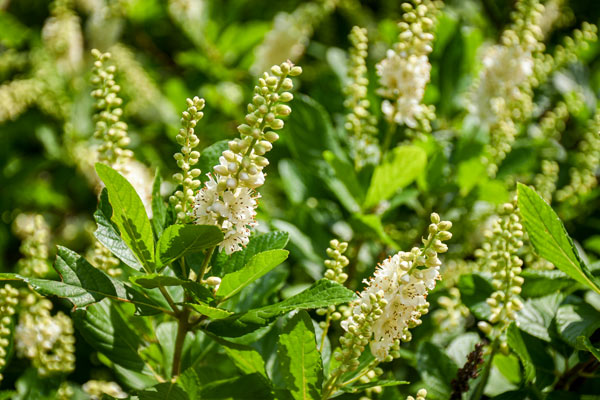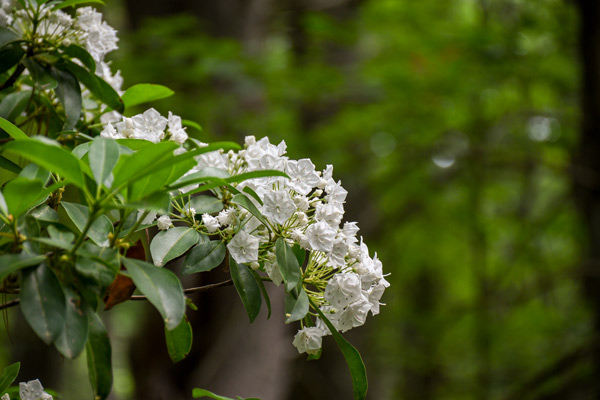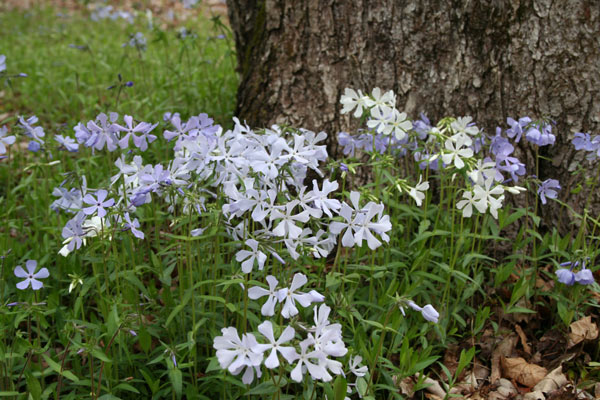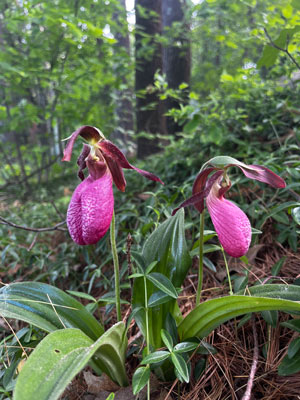By Liz Nye, New England Botanic Garden
April 2024
Two years ago, the Garden Club of America (GCA) launched the Native Plant Month Initiative, an effort to combat biodiversity loss by raising awareness about the value of native plants in healthy ecosystems. Each year, as part of the initiative, club members from the GCA’s 199 member organizations advocate on state and local levels for their legislators to pass “Native Plant Month” proclamations.
Here in Massachusetts, the Cambridge Plant & Garden Club and the Worcester Garden Club led the 2024 effort, uniting over a dozen other like-minded organizations, including the Garden, to encourage Governor Maura Healey to announce April as Native Plant Month — and she did! The hope now is to get permanent legislation or monthly proclamations established in all 50 states.
“There’s definitely a native plant movement going on,” says the Garden’s Director of Horticulture Mark Richardson. “And one really exciting thing coming out of this is an enthusiasm for insects.”
This is good because insects are at the front lines of the biodiversity crisis our planet currently faces. The losses in their numbers are staggering. Mark attributes much of the newfound love—or at least appreciation—of bugs to the work of entomologist Doug Tallamy. Thanks to Tallamy’s 2007 book Bringing Nature Home, many people now notice the connection between the plants they grow and the types of insects, birds, and other wildlife that visit their gardens. By choosing native plants, gardeners create vital habitat and preserve important relationships between plants and animals that have evolved over millennia.
As if this wasn’t a compelling enough reason to get on board with native plants, there’s another. “Native plants reinforce a sense of place in the landscape,” Mark says. “They are a great way to celebrate the originality of an area and what’s unique about it.”
At the Garden, horticulture staff embrace native plants in many of their formal designs. While supporters of Native Plant Month hope the initiative inspires people to do the same at home, Mark cautions that before snapping up every kind of native plant at the nursery, gardeners should know that growing native plants is not always easy. Often, native plants get sold as low-maintenance alternatives to non-native plants. But not every native plant is right for every garden. For new gardeners especially, Mark worries that the guidance that native plants will be more resilient because they are better adapted to the regional climate can lead to a false sense of optimism followed by disappointment if those plants fail. To avoid this outcome, he encourages gardeners to learn as much as they can about their site and their plants, and to match plant needs with site characteristics like soil type, sunlight, and available water resources. Luckily, organizations and clubs dedicated to educating about native plants and their care are only growing as the Native Plant Movement expands, and they provide a wealth of resources.
Here are a few ways to dig deep and learn more this Native Plant Month:
Foster a biodiverse habitat in your garden or yard.

Sweet pepperbush (Clethra alnifolia ‘Paniculata’)
- Incorporate more native plants into your garden beds. Which ones? In a 2020 talk, New England Botanic Garden’s Director of Horticulture Mark Richardson shared his recommendations for New England gardens. He also co-authored a book on the topic.
- Avoid purchasing and planting ecologically harmful plants and remove them where you can. This doesn’t mean ripping out all your daylilies, but rather becoming more knowledgeable about harmful plants in our landscape. The state maintains a list of prohibited plants in MA that can help gardeners learn more.
- Reduce or eliminate pesticide use. Here in MA, state legislation limits the use of neonics, a specific class of systemic insecticides that make flowering plants toxic to insects that depend on them. But there’s still more work to do. One way to start is by learning more about the harmful effects of pesticides on the environment and to people.
- Adopt sustainable gardening practices that help combat climate change and support healthy ecosystems. The most impactful are transitioning to electric landscaping equipment and using peat-free potting soils. Both of these practices help to limit carbon dioxide in the atmosphere.
Take a class, join a group, and spread the word.
- Grow Native Massachusetts hosts a community calendar of events and workshops led by partner organizations across the state on all things ecological gardening. They also hold a native plant sale.
- From April through June, the Garden will offer several family-oriented educational programs that introduce children to some of the region’s native plants as well as the relationships between these plants and insect species. Classes include a Pollinator Party, Insect Lab, Natural Sun Prints printmaking workshop, Wildflower Walk, and more.
- Many national gardening and horticulture organizations like Wild Ones, North American Native Plant Society, and Garden Club of America have Massachusetts chapters with members passionate about native plants and eager to help other gardeners take up ecological approach to their gardening practice.
Explore native plants in the natural landscape.
- At the Garden, native spring perennials, shrubs, and trees are celebrated in the Inner Park, a naturalistic woodland garden that spans more than five acres. Meadows surrounding the core garden property feature native plants as well.
- Visit a land trust property or public park and look for naturally occurring native plants. Use apps like iNaturalist to help you identify them.
Continue to learn.
- Whether looking to source native plants, learn about pollinators, or foster biodiverse habitat, like-minded organizations can help home gardeners deepen their understanding and take next steps. Native Plant Trust, Ecological Landscape Alliance, Xerces Society, Homegrown National Park, Wild Seed Project, and Massachusetts Nursery and Landscape Association are just a few.
- For terrific plant databases and catalogs, check out Go Botany, Lady Bird Johnson Wildflower Center, and North Creek Nurseries.
- For more about the power of gardening to positively impact our planet, check out the TED Talk “Let your garden grow wild” with Rebecca McMackin, an ecological horticulturist sure to inspire your next gardening adventure!
*Featured image: Common milkweed (Asclepias syriaca)
About the Author
Liz Nye is the Public Relations Manager at New England Botanic Garden. She holds a master’s degree in science writing from Johns Hopkins University and enjoys learning about and writing about all things plants.




